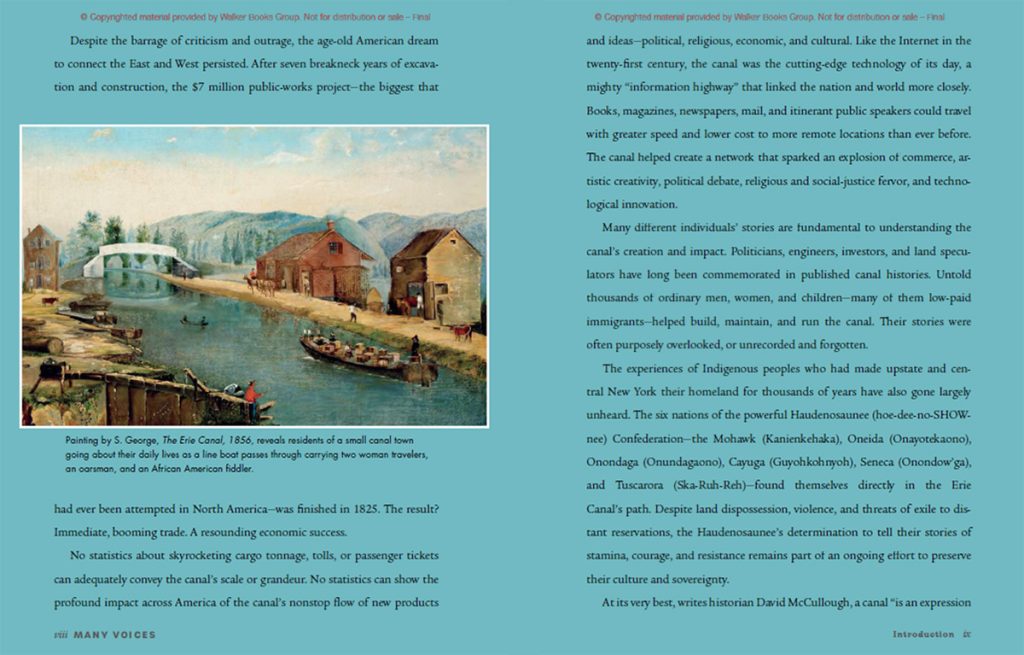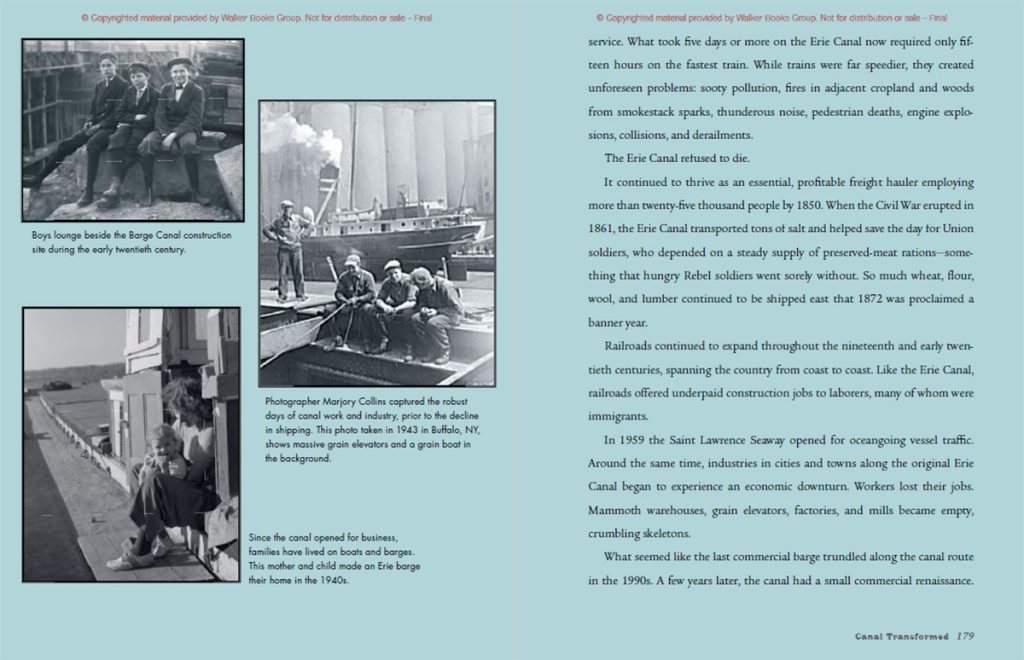Building Erie, the Canal That Changed America
Book Description
“The Nation’s First Superhighway” existed before the spread of cars … or even railroads! This immersive photo book ferries readers through the past and present of the Erie Canal, from impossible idea to groundbreaking reality.
In the twenty-first century, it’s hard to imagine a canal as cutting-edge technology. Yet even to the most scientifically-minded, the Erie Canal once seemed an unachievable dream. Thomas Jefferson himself called it “nothing short of madness;” one critic felt sure it was impossible as “building a canal to the moon.” Yet with eight years and nearly $185 million dollars in today’s currency, the Erie Canal opened in 1825 to celebratory cannon fire: an innovating — and enduring — marvel of engineering.
But as the Canal shaped the flow of American history, the sociopolitical impact reached much further than its shores. A largely untold tale of creativity and cowardice, sacrifice and greed, heroism and prejudice, the Erie Canal’s story is as complex and compelling as that of America itself.
Author Laurie Lawlor captures the landmark achievements of the Erie Canal while diving deep into corporate greed, environmental devastation, poor working conditions, and its impact on the Haudenosaunee people. Pairing rich back matter (including maps, source notes, an index, bibliography, glossary, and timeline) with attention grabbing photographs, accomplished STEAM storyteller Laurie Lawlor connects the Erie Canal’s past and present to plumb the depths of unexplored American history.
a few pages from the book

Honors and Recognition
- Illinois Reads 2026 selection
Resources
- Discussion Guide for teens, adults, classrooms, book clubs
You’re singing the song, aren’t you? “I’ve got an old mule, and her name is Sal.” Here are the complete lyrics and the history of the song “Low Bridge.”
Watch Bruce Springsteen sing “Low Bridge” as part of The Seeger Sessions (YouTube).
- “Erie Canal: The Ditch that Made Chicago Great, Marks Its 200th Birthday,” Neil Steinberg, WBEZ Chicago, Chicago Public Media, 27 October 2025
- “The Erie Canal’s 200th Anniversary: 363 Miles that Transformed America,” George Will, The Washington Post, 22 October 2025
“Many Voices: The Untold Story of Building the Erie Canal 200 Years Ago,” Buzz Realm, 12 September 2015 (YouTube)
Sloane Lecture, Erie Canal Museum, August 28, 2025, “Go Ahead Anyway: Engineering Marvels and Challenges.” (YouTube)
- “New book tells the story of building the Erie Canal 200 years ago,” Scott Pemberton, Evanston Round Table, 11 September 2025
- Radio interview about Many Voices with Larry Meiller on Wisconsin Public Radio, 19 August 2025.
- “ ‘Where do you get your ideas?’ Navigating the Origins of Nonfiction,” a guest post by Laurie Lawlor,” Amanda MacGregor, School Library Journal, 14 Aug 2025
- “Many Voices: Building the Erie Canal,” editorial staff, New York Almanack, 5 May 2025
Reviews and Comments
“A social history for young people that seeks to explain the complex interplay of political, technological, cultural, and economic forces that culminated in the creation of the Erie Canal. The canal connecting the Atlantic Ocean with the Great Lakes opened in 1825 after almost a decade of construction and a cost of $7,000,000 ($185 million in today’s terms). Lawlor situates the canal in the geopolitical and social factors that contributed to its development, reveals the extraordinary costs in human, natural, and technological resources that made the 363 mile-long waterway a reality, and illustrates the far-ranging repercussions that the canal has had on individual lives and on American society over the last 200 years. Her narrative stays true to the goal encapsulated in the title, that of centering the voices of the many Indigenous, enslaved, and immigrant peoples who experienced profound loss and change from this marvel of engineering and economic progress. The final chapters give some consideration to the ecological implications of the canal and the industrialization that sprang up in the wake of its creation. An extensive bibliography for further reading rounds out the narrative, as well as source notes, a glossary, a time line, and an index. VERDICT This story of one of the most pivotal engineering accomplishments in U.S. history, told from diverse perspectives, is highly recommended for middle and high school collections. (Kelly Kingrey-Edwards, School Library Journal, starred review)
“Author Laurie Lawlor captures the landmark achievements of the Erie Canal while diving deep into corporate greed, environmental devastation, poor working conditions, and its impact on the Haudenosaunee people. Pairing rich back matter (including maps, source notes, an index, bibliography, glossary, and timeline) with attention grabbing photographs, accomplished STEAM storyteller Laurie Lawlor connects the Erie Canal’s past and present to plumb the depths of unexplored American history.” (John Yunker, EcoLit Books, full article)
“Award-winning author Laurie Lawlor’s full-color narrative nonfiction explores how this monumental, 363-mile canal was built across a daunting upstate New York landscape at a time when America had no trained engineers, no idea how to make water-proof concrete, no modern mechanical tools, and no reliable source of workers.
“Many Voices takes a deep dive into how canal construction altered the environment and uprooted the Haudenosaunee from their long-standing homeland in New York.
“Linking the Great Lakes and the Atlantic Ocean, the Erie Canal boosted the global economic status of New York City, expanded Westward settlement deep inside America’s farming heartland, and spiked growth in cities as varied as Chicago, Milwaukee, Toledo, Rochester, Duluth, and Toronto.” New York Almanack()

written by Laurie Lawlor
Holiday House, 19 August 2025



